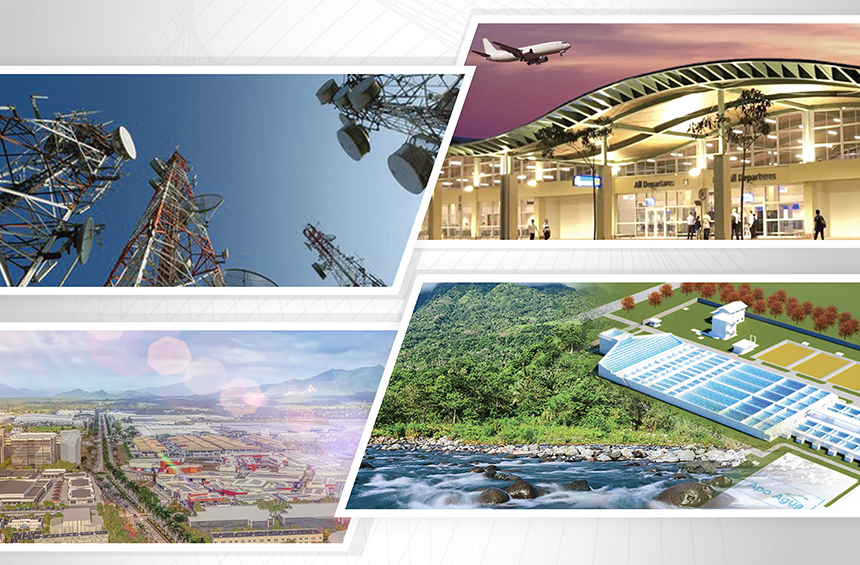Each day, more countries are becoming more aware of how climate change and pollution can impact not only the environment but also human life. From health risks to biodiversity loss, there is a lot at stake if these issues are not properly addressed.
So far, attempts for change have been working on lower levels in the Philippines. Consumers are encouraged to opt for greener alternatives, and local government units have released their mandates to reduce plastic use. However, these methods can only go so far. The green movement must also work on a higher level, from pushing environment-friendly reforms and investing in green infrastructure.
That said, finding a balance between investing in green projects and commercially viable enterprises is always a tricky dilemma that investors have to navigate. Fortunately, there are feasible alternatives to non-green projects and assets, ranging from waste-to-energy (WtE) power plants to water infrastructure that the Philippines can significantly benefit from.
The Asian Development Bank (ADB) released a detailed report on this very topic in 2020 called “Green Infrastructure Investment Opportunities.” Based on this study, it becomes clear that there are green investment opportunities readily available. To start, here are some of the green ventures that investors should consider.
Sustainable Water Management
Even though water is essential to everyday living, not all Filipinos have access to clean water. Indeed, there is a shortage of water infrastructure across the country, especially in rural areas.
To address this issue, the National Economic and Development Authority (NEDA) launched the Philippine Water Supply and Sanitation Master Plan in September 2021. The master plan aims to provide every Filipino with water access by 2030 through building water supply and sanitation institutions and increasing the resilience in their surrounding environments. The plan highlights that the government and private sector will have to invest P1.1 trillion to make this possible.
The role that water plays is critical throughout all sectors of society. It is crucial for health, livelihood, and disaster control. Steady water access helps create jobs across various industries, which reduces unemployment, increases purchasing power, and boosts economical health overall. Thus, investing in building green water infrastructure is a significant step forward for the Philippine economy.
Low Carbon Transport
Transportation plays a vital role in driving economic development. From transporting retail goods to improving job accessibility, effective transportation modes are needed to make sure that various assets reach where they need to go.
Despite its importance, mass transportation is lacking in the country, whether in terms of quantity or quality. Hence, people opt for private cars, which, in high numbers, contribute significantly to greenhouse gas (GHG) emissions.
Investing in transport infrastructures like rails, ports, and roads can markedly improve mobility and help economic players more effectively. Innovative solutions like the cable car public transport system in Bolivia can make mountainous terrain easier to navigate without needing to effect drastic changes on the natural landscape. Aside from this, institutions should also invest in research for cleaner fuels to reduce carbon emissions.
Renewable Energy
Today, it is difficult to imagine life without electricity. People and institutions alike rely on it to ensure a smooth working process, from performing work online to maintaining utility servers. However, the generation of electricity highly relies on methods that emit a lot of GHG, such as burning coal.
While doing away with coal power plants immediately is unlikely, researchers and investors alike must look for other avenues that are also effective but more environment-friendly. Some of the renewable energy sources the Philippines is looking into today include:
- Solar energy — The country is located near the equator, which means that several areas are well-positioned for harnessing solar power.
- Wind energy — There are select areas in the country that have strong winds ample for energy collection.
- Hydropower — With the high number of water forms across the country, hydropower has a lot of energy potential in the Philippines.
- Geothermal energy — Situated along the Pacific Ring of Fire, the Philippines is the third-largest producer of geothermal energy globally, after the U.S. and Mexico.
- Bioenergy — The Philippines is rich in bioenergy fuels, such as aquatic biomass, agricultural crop residues, animal wastes, and municipal solid wastes.
With ample research and proper funding, the Philippines will be able to harness its many resources and become one step closer to producing energy with low or zero carbon emissions.
Sustainable Waste Management
Whether the waste is found in a dump or a sewer, handling it is a problem that many communities in the Philippines face. Cities, in particular, struggle with waste management as their populations increase. Without a sustainable solution, this problem can grow bigger as these wastes could potentially enter natural resources and even human bodies.
Thus, it is important to fund research and projects that aim to reduce, recycle, and even transform waste by-products. Currently, local government units are looking into WtE facilities as part of their waste management efforts. There is, however, an arguably higher potential for waste as a resource not only of energy but also of commercially viable products.
Globally, there are initiatives that show results in transforming waste into construction materials, furniture, apparel, and other house items. With the proper investment in green projects and studies, the image of a circular, zero-waste Philippines is not far from reach.
Overall, there are plentiful opportunities for green infrastructure in the country. From treatment plants to recycling initiatives, investors have a lot of options. As more institutions and investors become interested in green projects and assets, the closer the Philippines becomes in attaining its sustainable goals.


